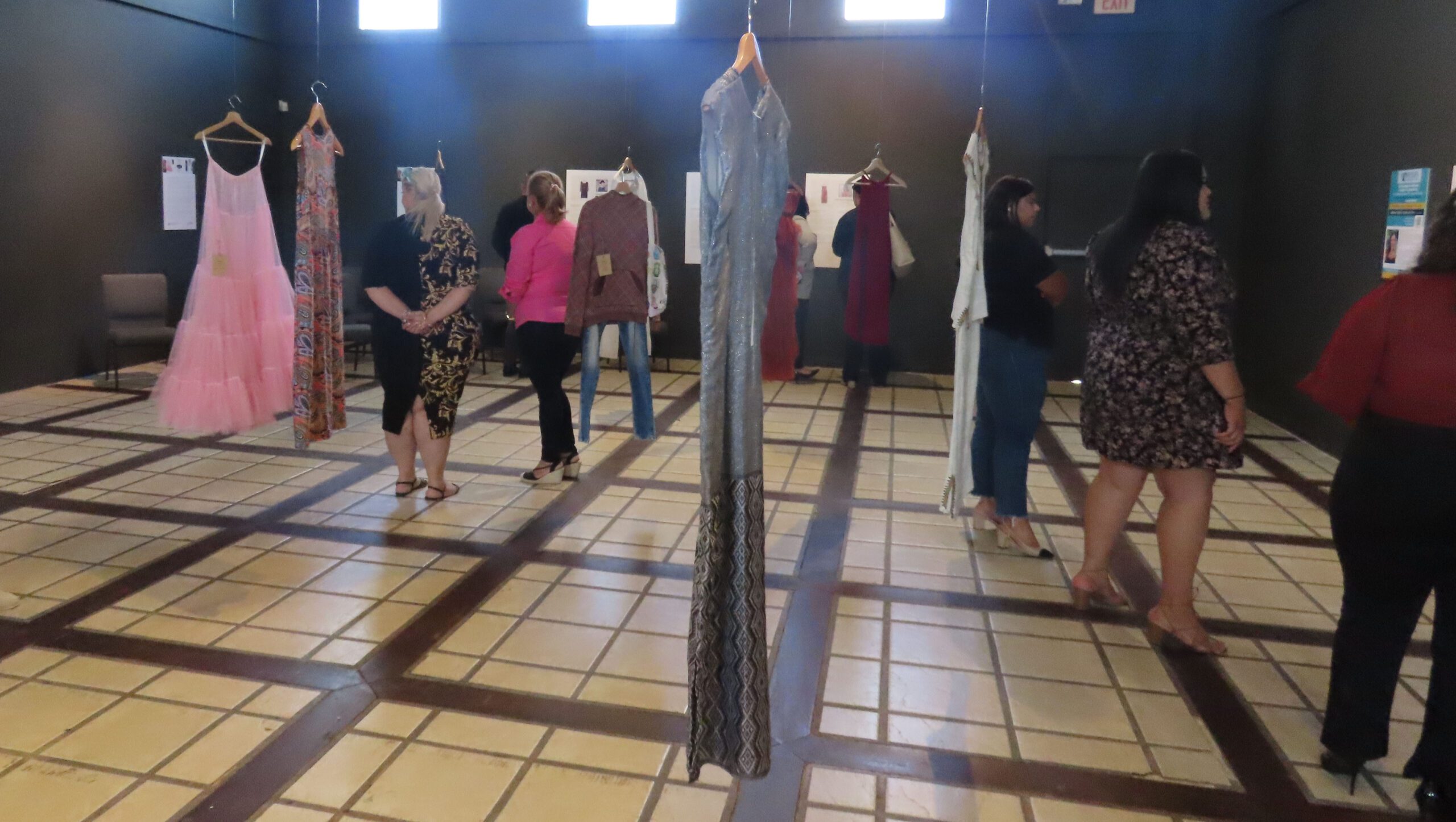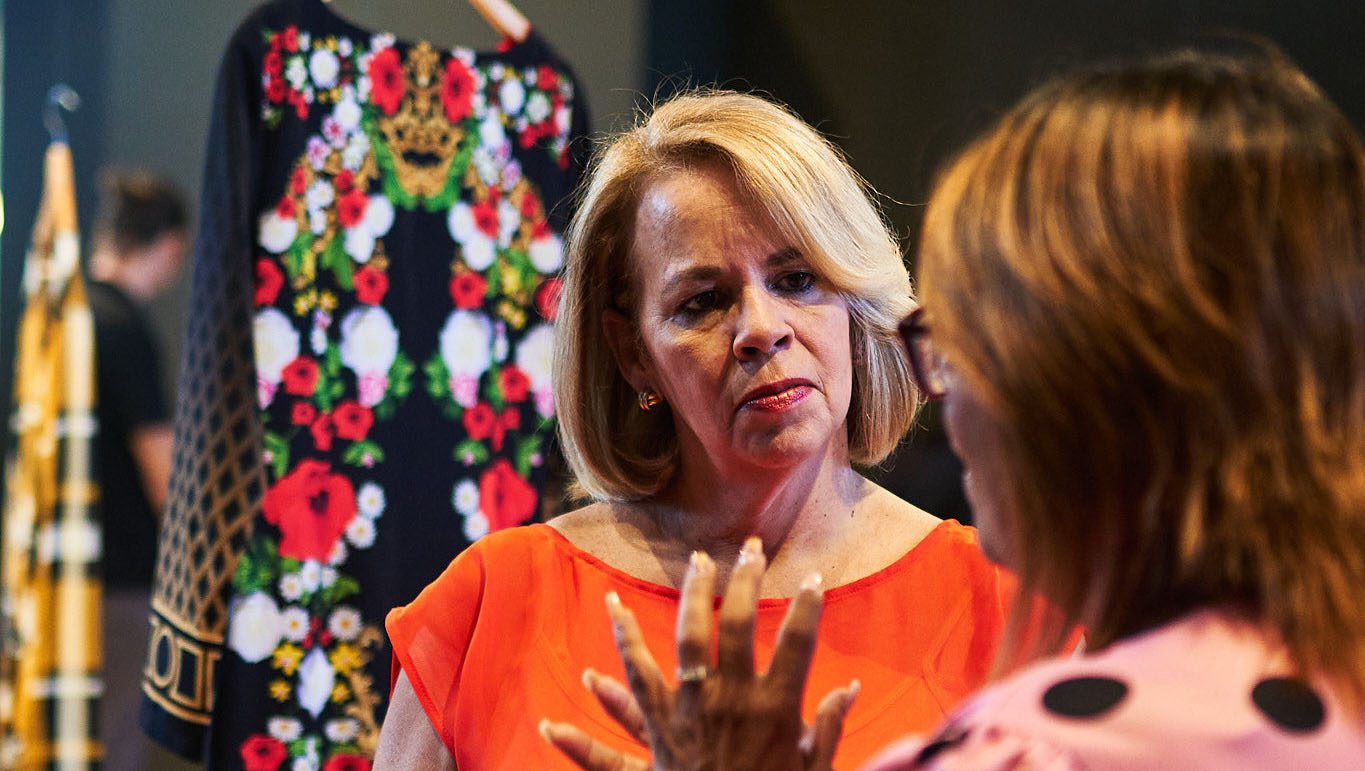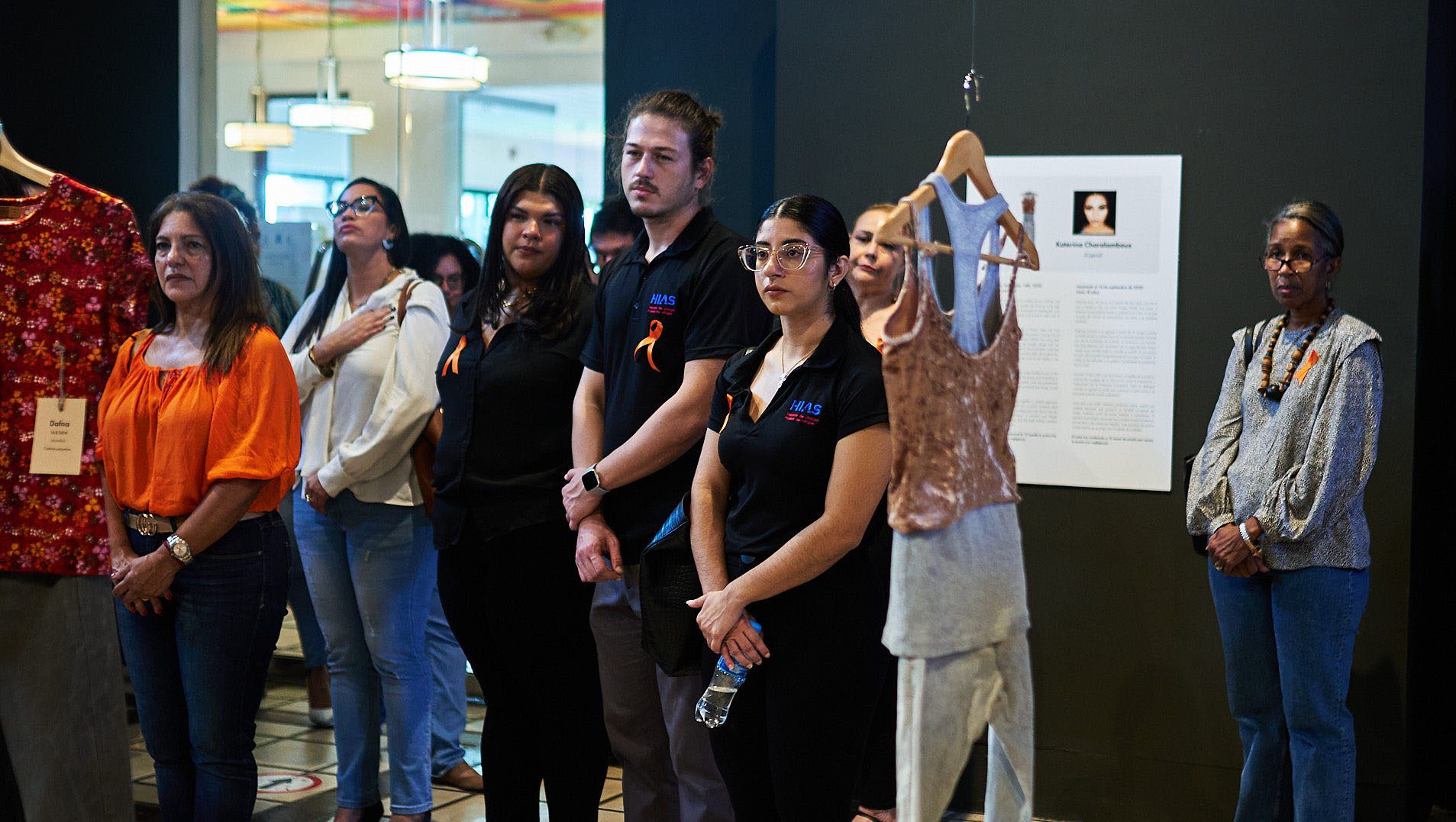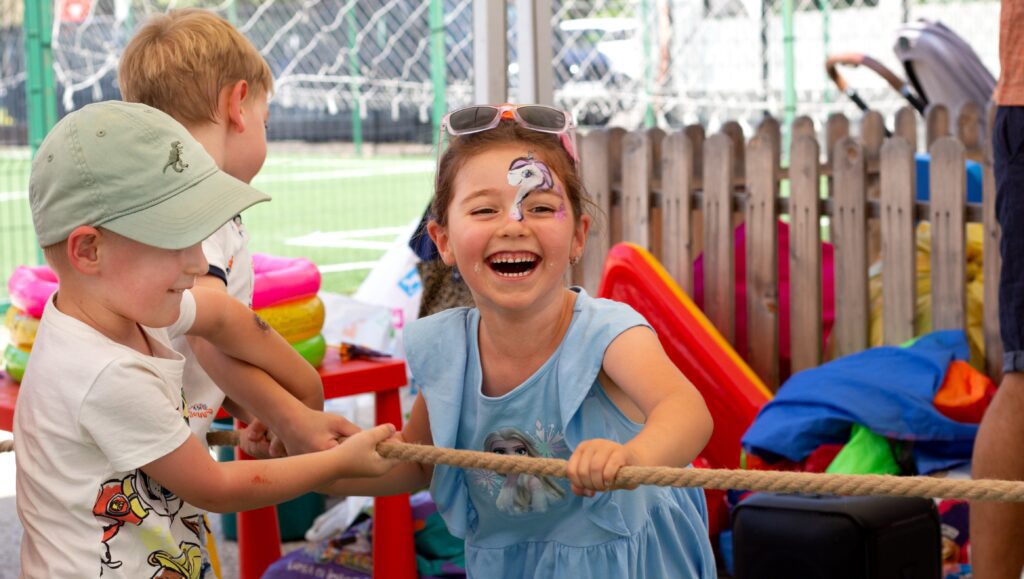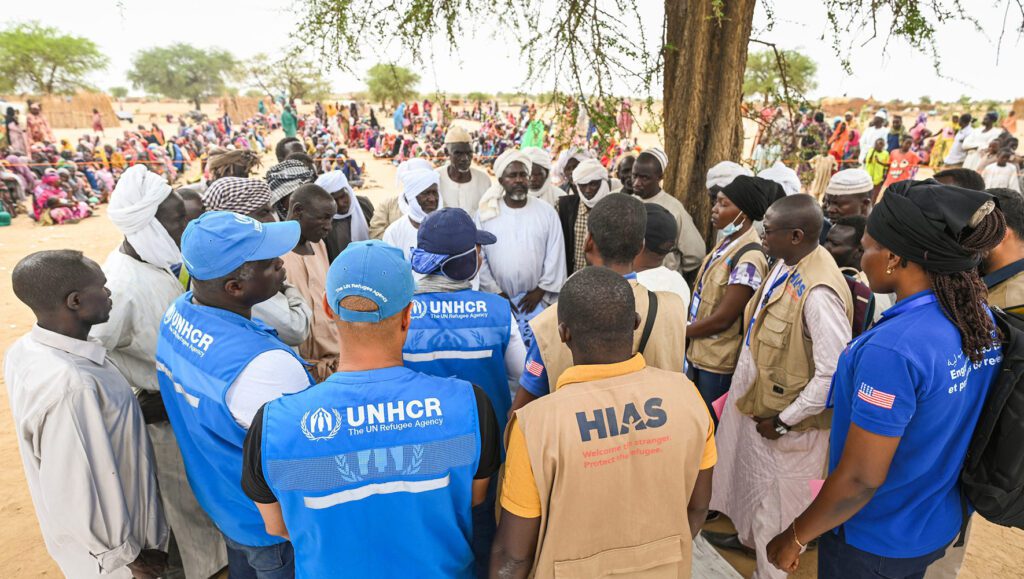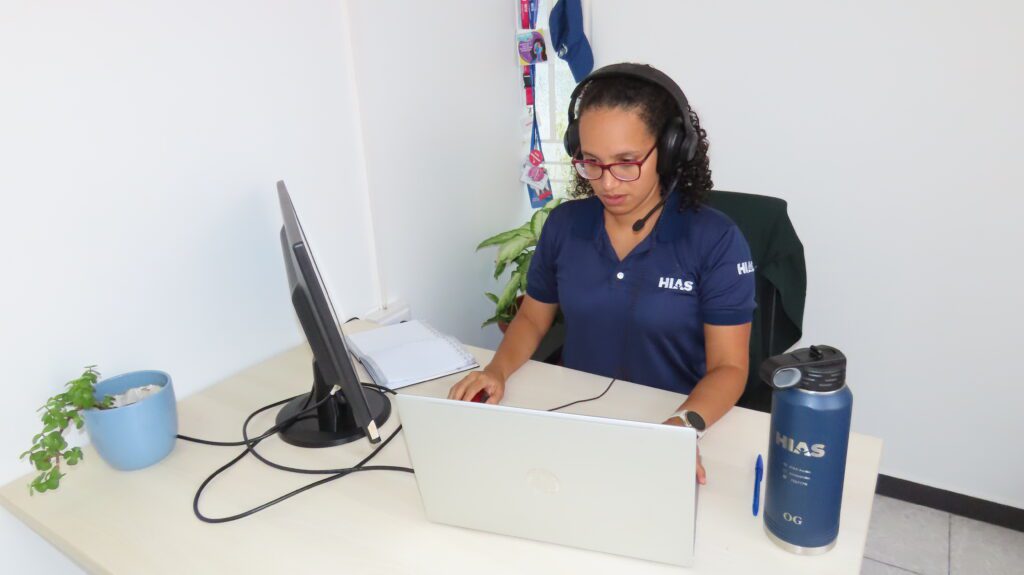
How do you get people to pay attention to violence against women and girls in Aruba?
One answer comes from an unexpected source: an exhibition by an Israeli artist that tells stories of women from Costa Rica, Cyprus, Greece, Honduras, and other countries. In addition to raising awareness among the general public, the exhibition has now also helped bring about an expanded role for HIAS to work with the government of Aruba on a number of plans to combat gender-based violence (GBV).
Since HIAS Aruba began operations in 2019, it has looked for ways to engage the public with GBV issues. Aruba, a territory of just over 110,000 people, hosts an estimated 17,000 Venezuelans — and gender-based violence is a persistent problem throughout the population. HIAS Aruba has conducted GBV trainings for police and government officials before, but without specific policies in place or legislation to rally around, it has been hard to get any momentum going.
“You really need something to make an impact and start a conversation,” said Cinthia Quant, HIAS Aruba’s GBV Coordinator.
That something is She’s Gone, an art installation illuminating the global phenomenon of GBV inflicted by spouses and other family members. Created by Keren Yehezkeli Goldstein, an Israeli artist, the exhibition shows the original garments of murdered women from various ethnic backgrounds, religions, and nationalities.
The garments are meant to function as “silent testimonies” of the women whose lives were violently taken away.
Among the clothing on display are an embroidered dress, a green T-shirt, a pair of jeans, a sleeveless linen top, and a denim jacket. A small tag is attached to each garment, noting the name of the victim, date of and instrument used in their murder, and details of a court sentence, if there was one. The exhibition intends for the garments to function as “silent testimonies” of the women whose lives were violently taken away.
HIAS Aruba used the She’s Gone project as a lead-in to 16 Days of Activism, the annual international campaign against gender-based violence that runs from November 25 — the International Day for the Elimination of Violence against Women — to December 10, Human Rights Day.
After getting the word out about the exhibition in radio and TV ads in English, Spanish, and Papiamento, HIAS Aruba arranged for different groups to view the art at different times. One special event was for people who are visually impaired: The visitors were allowed to touch the clothing and hear the stories of the women, and some even told Quant that they could “feel the women.”
HIAS Aruba also arranged for the prime minister and members of parliament to view the exhibition, a visit that is poised to yield results: The prime minister soon thereafter said she was committed to working on GBV and has showed her support by assigning key persons in her Ministry and the Ministry of Justice and Social Affairs to work on a more comprehensive response and prevention on GBV. Now HIAS Aruba is working together with a representative from the Ministry of Justice and developing a series of workshops for the government that will explain basic issues in GBV prevention programming.
“They are taking us more into account,” Quant said, and added that HIAS Aruba is in discussions with government officials on how to start addressing GBV through policy.
GBV programming in Aruba includes reducing the risk of GBV by providing women and girls with safe spaces, education, financial literacy, economic asset-building, and peer support. HIAS Aruba has a team of five working on these issues, providing services mostly to Venezuelans but to other groups as well.
Although getting the government involved in GBV issues is still in its early stages, Quant says she hopes the information sessions will combat misinformation and help with addressing gaps in assistance to survivors — such as requiring women to pay for expensive medical reports when they seek medical assistance at the hospital.
Acknowledging that there is a lot of work ahead, Quant and colleagues are strategizing how to eventually get more effective responses to GBV survivors on multiple levels (health, legal, mental health counseling) so they are not revictimized, while also focusing on more prevention measures in the private sector and additional education methods.
“We needed a vision and we have to start somewhere,” Quant said. “Hopefully, this is the place.”
